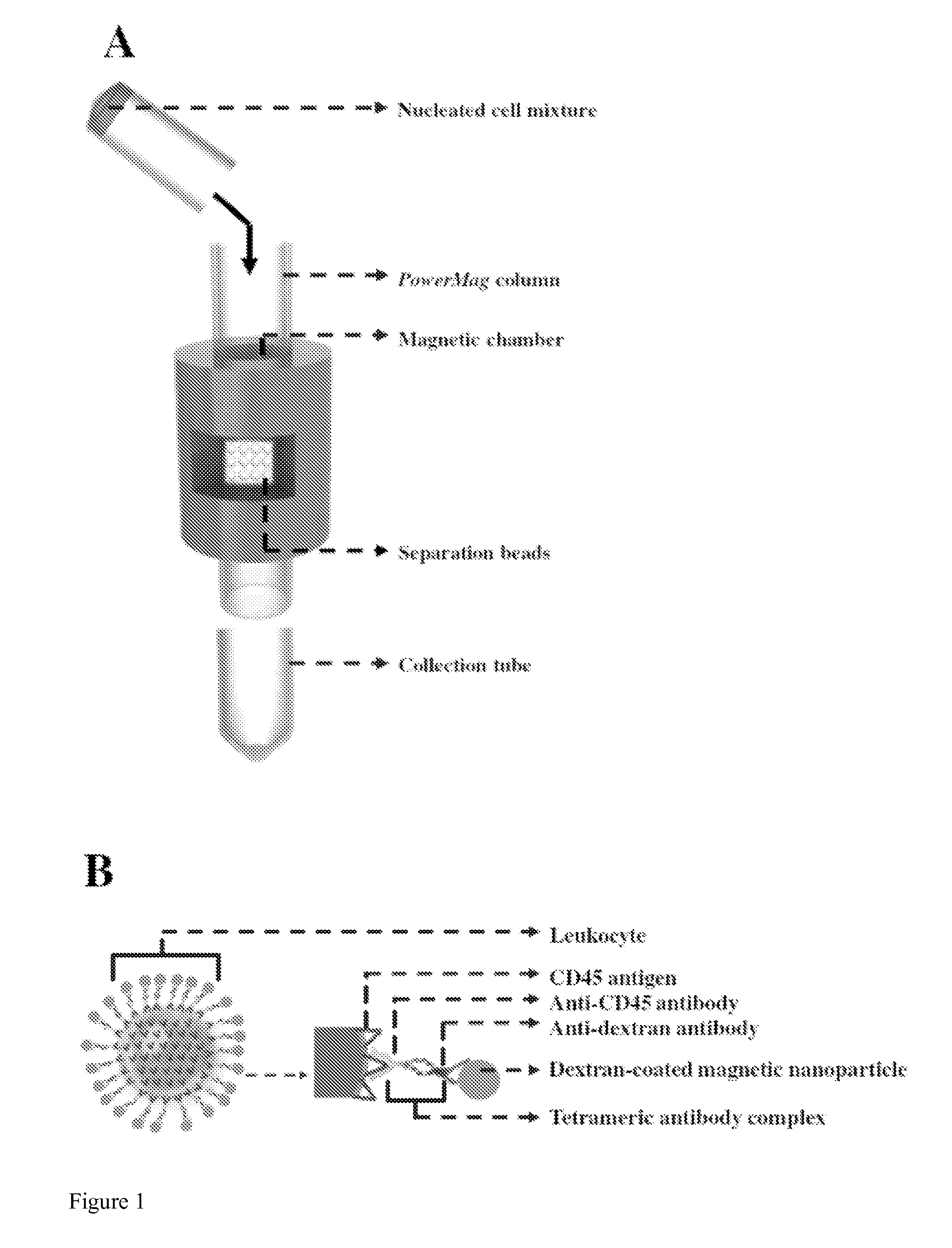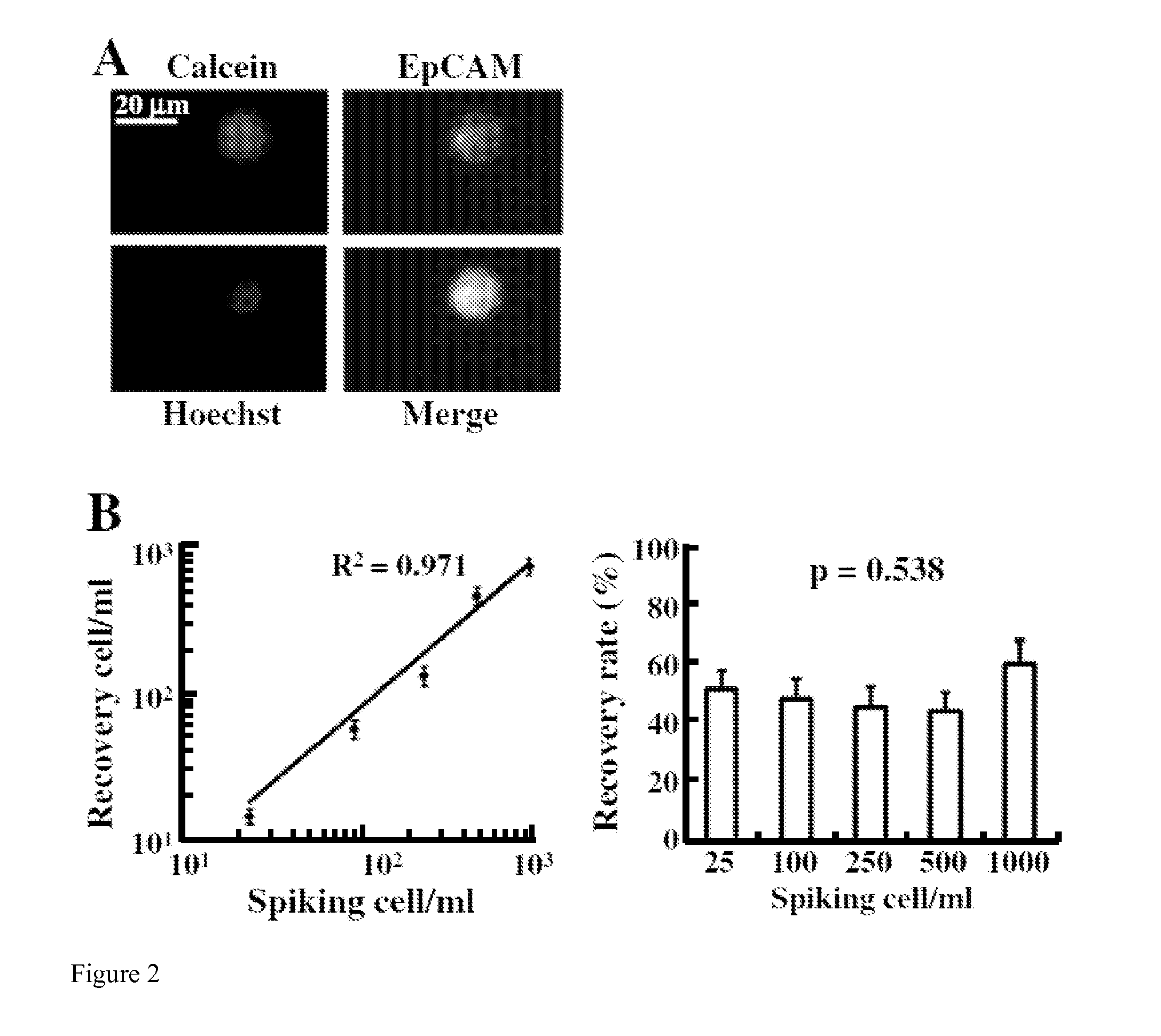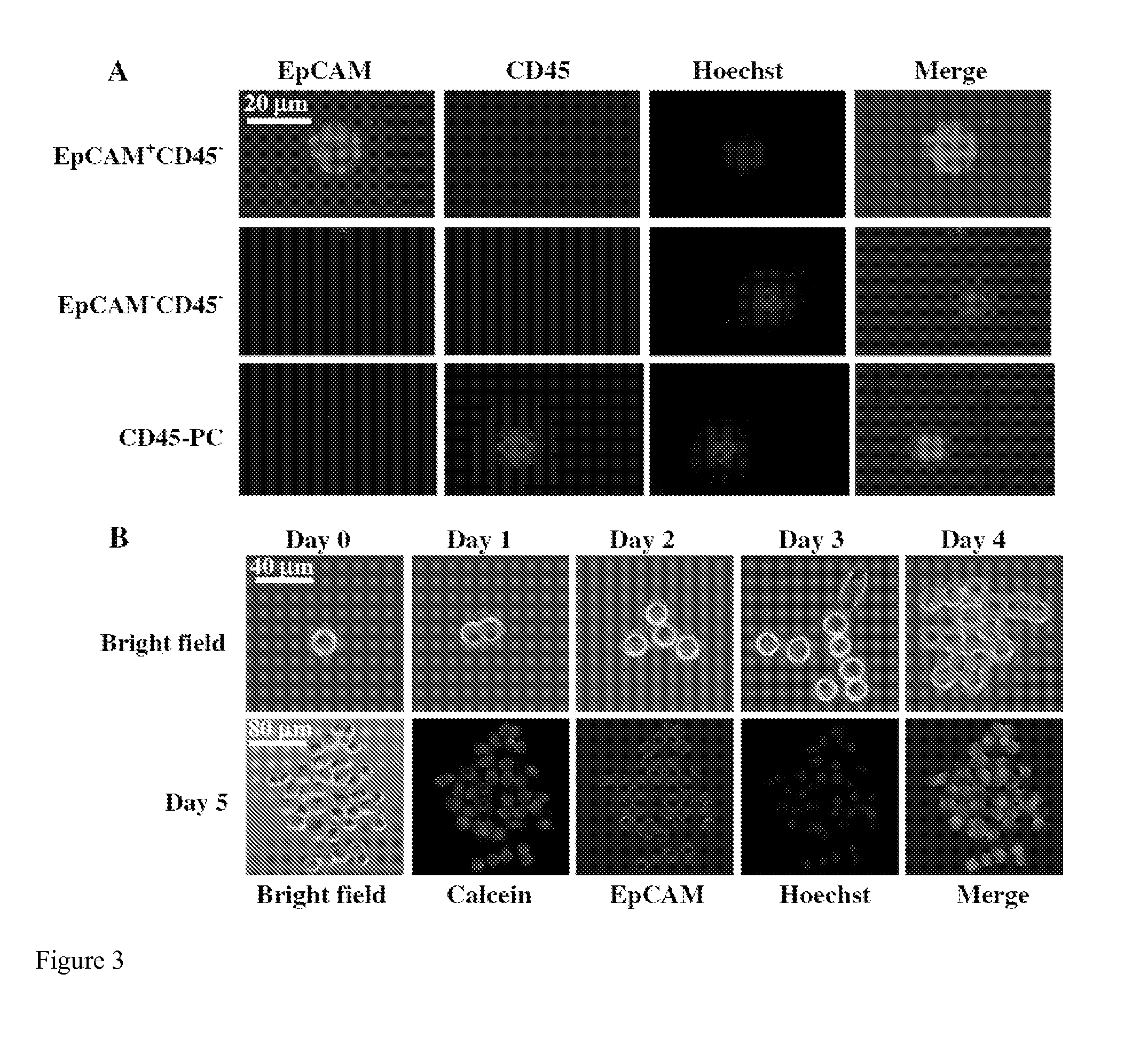Methods, Systems, and Compositions for Enrichment of Rare Cells
a rare cell and composition technology, applied in magnetic separation, instruments, chemistry apparatus and processes, etc., can solve problems such as limiting the utility of isolated cells, and achieve the effects of sensitive, accurate, and inexpensiv
- Summary
- Abstract
- Description
- Claims
- Application Information
AI Technical Summary
Benefits of technology
Problems solved by technology
Method used
Image
Examples
example 1
A Negative Selection System for Effective Leukocyte Depletion and Enhanced Detection of EpCAM Positive and Negative Circulating Tumor Cells
Materials
[0043]The anti-CD45 depletion kit was purchased from StemCell Technologies (Vancouver, BC). The anti-EpCAMand phycoerythrin (PE)-labeled anti-CD45 antibodies were from Abcam (Cambridge, England). The vacutainer tube with K3EDTA was from BD Biosciences (San Diego, Calif.). The Alexa Fluor 488-conjugated donkey anti-mouse IgG (H+L), the CellTrace™ calcein red / orange AM and the Hoechst 33342 staining dye were from Invitrogen (Carlsbad, Calif.).
Patients and Blood Collection
[0044]This study was approved by the Institute Review Board of Chang Gung Memorial Hospital with the approval ID of 99-4095B and 100-4623C. The peripheral blood (4 ml / test) was withdrawn from 27 healthy donors and 52 cancer patients with written informed consent. The patients with locally advanced carcinoma and distant metastasis were treated with standard concurrent chemo...
example 2
Prognostic Value of Circulating Tumor Cells with Podoplanin Expression in Patients with Locally Advanced or Metastatic Head and Neck Squamous Cell Carcinoma
[0067]Head and neck squamous cell carcinoma (HNSCC) is a common malignant disease worldwide. The 5-year survival rate for all stages of HNSCC is approximately 40-50%. In locally advanced diseases, which account for about 60% of all HNSCC settings, 20-30% of the patients eventually relapse despite aggressive protocols in the standard first-line treatment such as the combinations of curative surgery, adjuvant radiotherapy or chemoradiotherapy (CRT) and definitive concurrent chemoradiotherapy (CCRT). Even in survival after treatment, the patients are usually impaired in social, speaking and eating abilities. Early detection of recurrence by any examination is thereby crucial for HNSCC patient care. A number of clinical features of HNSCC patients such as TNM staging, comorbidity, sites of origin, treatment modality, and immunohistoch...
example 3
Early Detection of Infiltrative Papillary Thyroid Microcarcinoma by Marked Elevated Circulating Tumor Cells Counts
[0077]The annual incidence of thyroid cancer is increased 2.4-fold over the past decade which is the most significant increase among different cancer types worldwide. Both the advance of diagnostic tools and the rise in disease occurrence contribute to the elevated incidence of thyroid cancer. In clinical setting, more than 90% of the thyroid cancer belongs to the papillary and follicular thyroid carcinoma. Papillary thyroid microcarcinoma (PTMC) is defined as tumor size equal to or less than 1.0 cm. Most of the PTMC patients have no obvious clinical symptoms and are usually identified during medical checkup or when specific medical procedures are performed. Despite PTMC is usually associated with good prognosis, lymph node metastases and loco-regional recurrences have been reported. While distant metastases and cancer-related death are rare in PTMC patients, it remains ...
PUM
 Login to View More
Login to View More Abstract
Description
Claims
Application Information
 Login to View More
Login to View More - R&D
- Intellectual Property
- Life Sciences
- Materials
- Tech Scout
- Unparalleled Data Quality
- Higher Quality Content
- 60% Fewer Hallucinations
Browse by: Latest US Patents, China's latest patents, Technical Efficacy Thesaurus, Application Domain, Technology Topic, Popular Technical Reports.
© 2025 PatSnap. All rights reserved.Legal|Privacy policy|Modern Slavery Act Transparency Statement|Sitemap|About US| Contact US: help@patsnap.com



